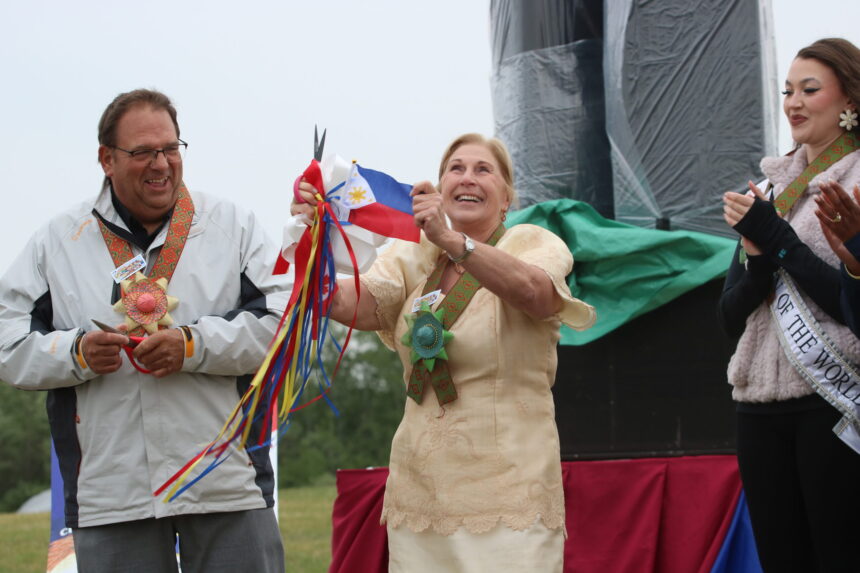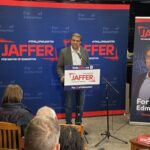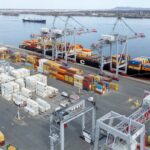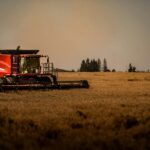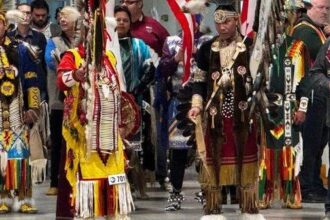The persistent drizzle this past weekend did little to dampen the vibrant spirits at Lloydminster’s Filipino Cultural Festival, where hundreds gathered to celebrate the rich heritage of one of the city’s fastest-growing communities. What began three years ago as a modest cultural showcase has blossomed into an eagerly anticipated annual event that transforms Bud Miller Park into a slice of Manila.
“Rain or shine, we celebrate,” laughed Maria Delgado, president of the Filipino-Canadian Association of Lloydminster, as she adjusted a plastic tarp over a display of traditional handicrafts. “This is Alberta—we’re used to planning around the weather. Besides, in the Philippines, we have monsoon season. A little rain feels like home.”
Despite the weather challenges, the festival delivered an immersive experience of Filipino culture through its universal language: food. Long lines formed at stalls offering lumpia (spring rolls), pancit (noodles), and the ever-popular lechon (roasted pig). The aroma of these delicacies wafted through the park, drawing in curious visitors who might have otherwise sought shelter from the rain.
The cultural program showcased traditional dances including the tinikling—where dancers navigate between moving bamboo poles—and the singkil, which tells ancient Filipino legends through intricate choreography. Local dance groups performed in vibrant traditional attire, with performers ranging from elementary school children to seniors, highlighting how cultural preservation spans generations within the community.
What makes this festival particularly significant is its role in Lloydminster’s evolving identity. Census data shows the Filipino-Canadian population in the city has more than doubled since 2016, reflecting broader immigration patterns across the Prairies. Where once Filipino culture might have been unfamiliar to many residents, it’s now becoming an integral part of the city’s multicultural fabric.
“When we moved here in 2011, there were maybe twenty Filipino families,” said Carlos Santos, who performed with the Lloydminster Philippine Cultural Dance Troupe. “Now we have our own grocery store, two restaurants, and this festival that brings everyone together. It’s about showing our children they can be proudly Canadian while honoring their heritage.”
The festival also serves as an economic and cultural bridge. Local businesses sponsored booths, Filipino entrepreneurs showcased their products, and information sessions on Philippine tourism attracted considerable interest. Mayor Sarah Thompson, who attended despite the weather, noted how the festival exemplifies the positive impact of immigration on smaller Canadian cities.
“Events like this enrich our community in countless ways,” Thompson said. “They bring new traditions, new businesses, and new perspectives that make Lloydminster more vibrant and interconnected with the global community.”
Perhaps most telling was the makeup of the crowd—not just Filipino-Canadians, but families of all backgrounds huddled under umbrellas, sampling unfamiliar foods, attempting a few words of Tagalog, and applauding performances with genuine enthusiasm. Children participated in traditional games while teens captured the cultural displays for social media.
As evening approached and the rain finally relented, the festival concluded with a community performance of “Pinoy Ako” (I am Filipino), a popular anthem that had become familiar to many non-Filipino residents through previous festivals. The moment embodied what the organizers had hoped to achieve—cultural appreciation that transcends mere spectatorship and becomes shared experience.
For a mid-sized border city like Lloydminster, the Filipino Cultural Festival represents something greater than an annual celebration. It’s a living example of how immigration continues to reshape the cultural landscape of Prairie communities, creating new traditions that honor both heritage and place.
As the festival wrapped up its third year, the organizing committee was already discussing plans for 2026, with ambitions to make it a regional attraction. If this year’s turnout despite challenging weather is any indication, the Filipino Cultural Festival has secured its place in Lloydminster’s cultural calendar, rain or shine.
For more coverage of cultural events in our region, visit CO24 Culture or explore our analysis of changing demographic trends in Western Canada at CO24 Trends.

